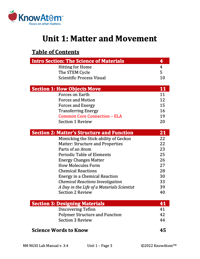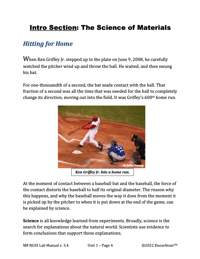Science background provides teachers with more in-depth information about the phenomena students explore in this unit on matter and movement. Here is an excerpt from the science background section for this lesson.
Structure and Properties of Polymers
All polymers, including silk, Teflon, and nylon, share certain properties because they are all huge molecules, with hundreds and sometimes thousands of atoms per molecule. Their structure gives them unique properties. For example, polymers are so large that they become entangled with each other.
Because of this structure, polymers tend to be strong and resistant to breaking. In contrast, small molecules like water do not tend to get tangled with each other because each water molecule is separate from the other. Polymers also tend to be both light and strong, and also resistant to chemicals (which is why Teflon is a non-stick coating on cooking pans).
Another way of thinking about the structure of polymers is to picture a box filled with steel chains. Each chain is made up of hundreds of individual links, but the chains themselves are not connected to any other chain. In this example, each steel chain represents one polymer molecule, made up of hundreds or thousands of atoms (individual links).
If you were to reach into the box and grab a chain, you could pull out an individual chain. But now imagine that you add a lot of tiny magnets into the box. Those magnets would attract the steel chains, connecting the individual chains into one large mass of chains. If you were to reach into the box and grab a chain now, you would pull out the entire mass of chains.
Making Bouncy Ball Polymers
To understand how this applies to polymers, let’s look at a simple chemical reaction between school glue and a substance called sodium borate, which is common in detergents and cosmetics.
By itself, glue is a synthetic polymer made up of molecules of polyvinyl acetate. It is a sticky liquid. Sodium borate is a solid powder that can be dissolved in water. Remember that box of steel chains. The glue is like the steel chains, made up of long chains of molecules strung together.
When you dissolve sodium borax in water and then add it to the glue, it has the same effect as adding the magnets to the steel chains. The sodium borate molecules react with the molecules of polyvinyl acetate, bonding at random places on the polyvinyl acetate molecule chains. The result is a new substance that is made up of tangled, long, flexible, cross-linked chains that are stretchy and bouncy. The unique properties of the new polymer can be changed by using different amounts of any of the reactants.
Once a polymer bouncy ball is formed, it has properties that relate to its function. One common function is as a toy that can be bounced. The bouncier the ball is, the higher it will bounce. Scientists can manipulate the height a bouncy ball bounces by using different amounts of any of the reactants.
Bouncy Ball Energy System
When any kind of ball is dropped from the air to the ground, it forms an energy system with the ground. For example, imagine that you are holding a polymer bouncy ball above the ground. The ball has gravitational energy. The higher you hold the ball, the more gravitational energy it has. When you drop the ball, that gravitational potential energy transforms into kinetic energy. In a perfect system, the total amount of energy is conserved as it transforms from one form to another. In other words, however much gravitational energy the ball has, that same amount of energy will transform into kinetic energy as the ball falls to the ground. However, in the real world, the ball won’t bounce as high on the second bounce because some of the energy has transferred out of the system.
As the ball moves through the air, drag causes some of the gravitational energy to transfer out of the bouncy ball system. As the ball falls to the ground, it experiences drag as it moves through the air. The force of drag causes some of the ball’s energy to transfer out of the system. When the ball hits the floor, friction between the ball and the floor transfers some more energy out of the system. Finally, at the moment the ball hits the ground, some of the energy is transferred out of the ball as it transforms to sound energy, which is energy produced by sound vibrations moving through a substance in waves.
At the same time as the ball hits the ground, the ground pushes back on the ball. This is because of Newton’s third law, the action-reaction law. The force of the polymer bouncy ball hitting the ground causes the ball’s shape to change because it is made of flexible rubber. As a result, the bouncy ball’s kinetic energy transforms to elastic energy, similar to what happens to the baseball when it is hit by the bat. As the bouncy ball’s shape is restored, the elastic potential energy transforms back to kinetic energy and the ball bounces back into the air.










